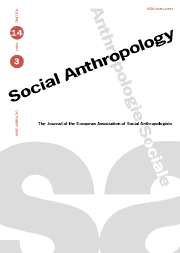No CrossRef data available.
Article contents
Making culture materialise
Published online by Cambridge University Press: 01 February 1999
Abstract
Hybrids of modernity. Anthropology, the nation state and the universal exhibition. By Penelope Harvey. London: Routledge. 1996. ix + 398 pp. Pb.: £13.99. ISBN 0 415 13045 X.
Contesting art. Art, politics and identity in the modern world. Edited by Jeremy MacClancy. 1997. Oxford: Berg. x + 253 pp. Pb.: £14.99. ISBN 1 85973 139 2.
Difference as manufacture/difference as contest
One of the exhibition-maker's prerogatives is making culture materialise by means of objects, images and texts. While by no means all exhibitions are defined as art, aesthetic presentation can transmute all sorts of unlikely items (of science, history, folklore, regions) into the most astonishing eyefulls, not least through the reproduction and circulation of photographic images of such artefacts beyond the confines of the museum (see, for example, Purcell and Gould 1986). The exhibition-maker's emphasis on choreography, composition and narrative, depends very clearly on aesthetic/technical effects produced by designers, photographers, technicians, carpenters, public relations men and many others, which together envelop an exhibit in a physiognomic as well as a purely visual atmosphere (cf. Taussig 1994). Despite the tendency in some circles to individualise the artist, or indeed the author of an exhibition, both are engaged in socially embedded enterprises albeit in rather different ways. Saying that the exhibition frame (architecture, design, technology, timing, occasion) works to accentuate the contents by adding meaning, presupposes an actively engaged collection of people before the event. Such spectacles presuppose an audience, of course, just as artists' work presupposes a market.
- Type
- Review Article
- Information
- Copyright
- © 1999 Cambridge University Press




